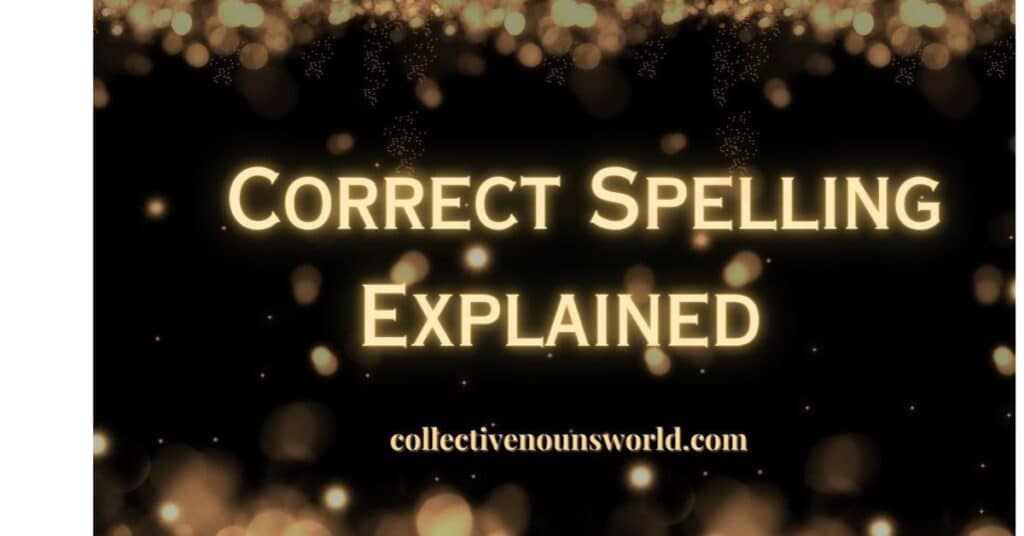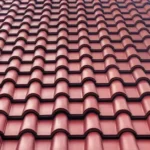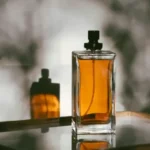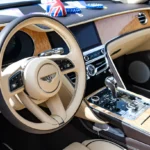When it comes to writing, small details can make a big impact—especially when it comes to spelling. One common confusion that many people face is choosing between “shiney” and “shiny.” While it might seem like a minor error, using the wrong spelling can affect the professionalism and clarity of your writing.
The correct spelling, “shiny,” is not only grammatically accurate but also follows the standard rules of English language formation. In this article, we’ll dive deep into why “shiny” is the right choice, how to avoid the common misspelling of “shiney,” and why spelling accuracy matters in your everyday writing.
Understanding Shiny vs Shiney
The word “shiny” is the proper adjective used to describe something that reflects light or has a glossy appearance. Whether it’s a shiny surface, polished shoes, or shiny hair, the spelling is always “shiny.” On the other hand, “shiney” is a misspelling of the correct word. It’s a common mistake that happens because people confuse it with words like “whiney” or “rainy,” which end in “-ey.” However, “shiney” doesn’t follow the English spelling rules and is not recognized by any reputable dictionary.
Many English learners and even native speakers make this common mistake, thinking that the word should end in “-ey.” However, following the English grammar rules, words derived from verbs like “shine” don’t end in “-ey.” Instead, they use the adjective suffix “-y,” which is why “shiny” is the right form. If you want to sound professional and ensure your writing is clear, always use “shiny” in the correct context.
Shiney: Common Misspelling and Mistakes
The misspelling of “shiney” can often be traced to mistakes in pronunciation and the confusion caused by other words with similar endings. In English, many adjectives end in “-ey,” such as “money,” “honey,” or “rainy.” Because of these examples, it’s easy to assume that “shiney” would be the correct form. However, this assumption is incorrect. The adjective form of “shine” must be “shiny,” following the common word formation rules for adjectives in English.
In fact, many people mistakenly write “shiney” in casual writing or text messages, but it’s crucial to recognize that this form is not acceptable in formal or professional writing. “Shiny” is the standard and grammatically correct version. If you want your writing to meet professional writing standards and English spelling conventions, stick to the correct form, “shiny.”
Shiny: The Correct Spelling and Meaning
“Shiny” is the proper adjective used to describe something that reflects light, has a gleaming appearance, or is polished to look new or smooth. For example, you might say, “The shiny surface of the car reflected the sun.” This describes the surface as being glossy, bright, and reflective. “Shiny” can be used to describe shiny objects, surfaces, or even abstract things like a shiny appearance.
The adjective “shiny” helps create a vivid image in the reader’s or listener’s mind. It conveys a sense of brightness or something that shines with light. If you want to paint a clear picture with your words, always choose “shiny” when describing something that gleams or reflects light.
Read more about Forrest Or Forest: The Right Spelling and When to Use Each
Side-by-Side Comparison: Shiney vs Shiny
Let’s compare the two words to highlight their differences. “Shiny” is the correct adjective used in English grammar to describe something with a glossy or polished finish. “Shiney,” however, is simply a misspelling and is not accepted in standard English language usage.
Here’s a simple comparison:
| Word | Correct Usage | Incorrect Usage |
| Shiny | “The car has a shiny finish.” | “The car has a shiney finish.” |
| Shiney | Not used in proper grammar. | A misspelling of “shiny.” |
Using “shiny” is important because it ensures your writing is both grammatically correct and professional. “Shiney” might confuse readers and make your work look less polished. Whether you’re writing an essay, an email, or a business report, it’s essential to stick to the correct spelling for clarity and accuracy.
Correct vs Incorrect Usage
In proper usage, “shiny” should always describe something that reflects light or has a polished, clean surface. For example, you can say, “The shiny object caught everyone’s attention.” On the other hand, using “shiney” in place of “shiny” is incorrect. It can create a perception of imprecision in your writing and even lower its credibility.
Key Differences Between Shiny and Shiney
The key difference between “shiny” and “shiney” lies in the adjective formation rules of English. While “shiny” is derived from the verb “shine,” with the adjective suffix “-y,” “shiney” does not follow this rule. In fact, “shiney” is simply an incorrect form that should be avoided. Using “shiny” ensures your writing follows English grammar rules, maintains language clarity, and makes your message clear to readers.
The Basics: Shiny or Shiney – Which is Correct?
When writing, it’s important to know which version of the word is correct. “Shiny” is the adjective form that correctly describes anything that reflects light or has a glossy or gleaming surface. For example, “The shiny car sparkled in the sunlight” is correct. However, “shiney” is a misspelling and should be avoided.
Shiny: The Standard Adjective
“Shiny” is the correct adjective, and it follows the typical pattern for forming adjectives in English. Words like “shiny,” “dusty,” or “messy” all follow the same pattern, where a verb is modified by adding the “-y” suffix. This is why shiny is the only acceptable form when you want to describe something that shines or has a reflective surface.
Shiney: The Misspelled Version
On the other hand, “shiney” is not a standard word in English. It doesn’t fit any typical adjective suffix patterns. The confusion between “shiny” and “shiney” usually arises from people thinking that the “-ey” ending applies to more adjectives in English. However, “shiny” is the correct form, and using “shiney” could confuse your readers or listeners.
Common Mistakes When Using Shiney
One common mistake people make is using “shiney” in place of “shiny.” This usually happens when people mispronounce the word or confuse it with other words that end in “-ey.” Another mistake occurs when people write quickly or casually in informal settings and forget to check their spelling.
Why People Often Mistake Shiney for Shiny
The linguistic confusion stems from words like “money” or “honey,” which do end in “-ey.” These types of words may mislead writers into thinking that “shiney” follows the same pattern. However, shiny is the proper form, and understanding this difference will improve both your writing clarity and overall language accuracy.
Grammatical and Etymological Insights
Understanding why “shiny” is the correct spelling goes beyond word usage. Let’s take a deeper look into the etymology and grammar rules behind the word.
The Origin of “Shiny” and Its Correct Form
The word “shiny” comes from the verb “shine,” which means to give out or reflect light. The adjective form of this verb is created by adding the “-y” suffix, making it “shiny.” This pattern follows the typical English method for forming adjectives from verbs, where “-y” is added to describe the state or quality of the subject. Therefore, “shiny” is the only correct adjective form.
Root Word: Shine
The root of the word “shiny” is “shine,” which has been used in English for centuries. The verb “shine” means to emit light or glow, and the adjective form “shiny” describes anything that has that reflective or glowing quality. The evolution of the word follows normal English grammar rules and is consistent with similar adjective formations.
Why “Shiney” Doesn’t Fit the English Pattern: A Linguistic Look
“Shiney” does not follow the standard word formation pattern in English. While there are other adjectives that end in “-ey,” like “rainy” or “money,” these are exceptions rather than the rule. “Shiny” correctly follows the adjective suffix pattern and fits seamlessly into English grammar. Using “shiney” would not only be incorrect but would also disrupt the consistent rules of adjective formation in the English language.
Read more about Oversite vs oversight: Avoid Common Spelling Mistakes
Everyday Usage Examples of Shiny vs Shiney
Let’s explore how “shiny” and “shiney” should be used in sentences.
Correct Examples of Shiny in Sentences
Using “shiny” in a sentence is straightforward. You can say, “The shiny surface of the table looked clean,” or “She wore a shiny necklace.” These sentences clearly describe objects that reflect light or have a glossy finish.
Why “Shiney” Should Be Avoided in Writing
You should avoid using “shiney” in any form of writing. It is not grammatically correct and can confuse your audience. Writing
“shiney” instead of “shiny” can make your work appear careless or unprofessional. Stick to the correct form, “shiny,” to maintain the clarity and professionalism of your writing.
Why Spelling Accuracy Matters
Correct spelling is crucial for effective communication, especially in professional and academic writing. Mistakes in spelling, like using “shiney” instead of “shiny,” can cause your writing to appear sloppy or unclear.
The Importance of Correct Spelling in Communication
Using the correct spelling helps your audience understand your message. When you use words like “shiny” properly, your writing appears more polished and trustworthy. On the other hand, misspelled words can distract the reader and cause them to question your attention to detail.
How Spelling Errors Can Impact Professional Writing
In professional writing, spelling errors can have a significant impact. If you’re writing an email to a client or submitting a report, a misspelling can undermine your credibility. Always proofread your work to ensure that you’re using the correct spelling, especially for commonly confused words like “shiny” and “shiney.”
Read more about Onsite Or On-Site: Key Differences Explained
The Definition of Shiny
Let’s revisit the definition of “shiny” to ensure we fully understand its meaning.
Shiny: What It Means and How to Use It
“Shiny” is used to describe something that has a polished or gleaming appearance, often because it reflects light. You can use “shiny” to describe things like surfaces, hair, or even abstract qualities, such as a shiny future or shiny opportunity.
Examples of Shiny in Sentences
Here are a few examples to reinforce the proper use of “shiny”:
- “The shiny car gleamed in the sunlight.”
- “Her shiny hair caught everyone’s attention.”
- “The shiny surface of the table sparkled after cleaning.”
Synonyms of Shiny: Glossy, Polished, Bright
Some synonyms for “shiny” include glossy, polished, and bright. These words can be used interchangeably depending on the context, but always remember to use shiny when referring to the reflective quality of an object or surface.
Conclusion
using the correct spelling of “shiny” is essential for clear and professional writing. While “shiney” may seem like a logical choice, it is simply a common misspelling. By sticking to “shiny,” you ensure your writing follows proper English grammar rules and avoids unnecessary confusion.
Spelling matters more than we often realize. Whether in casual writing or professional documents, accurate spelling helps maintain your credibility and readability. So, remember to choose “shiny” whenever you describe something that gleams or shines.

Luna Jasper is an experienced blogger with a passion for language and grammar. At **Collective Nouns World**, she shares her expertise in exploring the fascinating world of collective nouns, making learning both engaging and fun. With years of writing and research under her belt, Luna’s insightful articles help readers understand and appreciate the English language.







